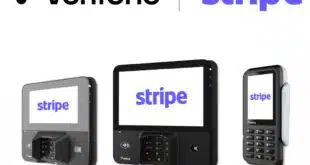Mobile-payments providers have looked to offers and rewards as a means of engaging with consumers and merchants and boosting payments activity. Indeed, most mobile strategists value the technology’s ability to deliver rewards at the moment consumers are in the store, if not necessarily in front of the relevant merchandise.
But it turns out not all mobile users are happy to receive these location-based mobile rewards, which depend on the GPS capabilities of mobile devices. Indeed some may be put off by them, according to research results released on Tuesday.
There’s a strong correlation between receptivity to these rewards and the user’s age, according to the research, which is part of a larger study on rewards marketing conducted by Synergistics Research Corp., an Atlanta-based research firm. “The older consumer tends to be less interested in anything like this,” Genie M. Driskill, chief operating officer at the firm, tells Digital Transactions News.
Mobile-wallet providers and marketers would do well to aim their offers at the 18-to-34 cohort, Driskill says. After that, interest in this style of marketing drops in “linear” fashion across the age groups, with those 65 and older showing the least interest, Driskill says. Indeed, age 35 seems to represent a sharp threshold. “At 35-to-49 it starts declining,” she adds.
Older mobile users, however, may well respond in greater numbers later on. For most, after all, the concept of receiving offers on a mobile device while standing in the store is still very new. “This is not to say that once it’s been around a while [older users] won’t adopt it,” says Driskill. “They generally do.”
That may come as reassuring news to banks and mobile-payments firms ranging from giants like Google Inc. to startups like LevelUp, which are using in-store discounts and other rewards to prime awareness and usage. Apple Inc. is widely expected to join the ranks of mobile-wallet marketers when it unveils its iPhone 6 next week.
But if responsiveness varies with age, it also depends on the type of offer. Synergistics’ research shows that the most effective form of rewards are special sales and discounts, with 18% of consumers indicating these are “very valuable” and a further 36% finding them “somewhat valuable.” Rewards linked to credit and debit cards are “very valuable” to 16% of respondents and “somewhat valuable” to 37%. The corresponding results for 17% and 33%.
Least valuable are product ads, which are “very valuable” to 10% of consumers and “somewhat valuable” to 26%. Some 490 consumers responded to questions about mobile rewards.
The research results reinforce the need for strong policies regarding consumer privacy, Synergistics says. Driskill’s advice, based on the research, is that “financial institutions and other providers need to approach younger consumers, and then allow them to opt out.”





